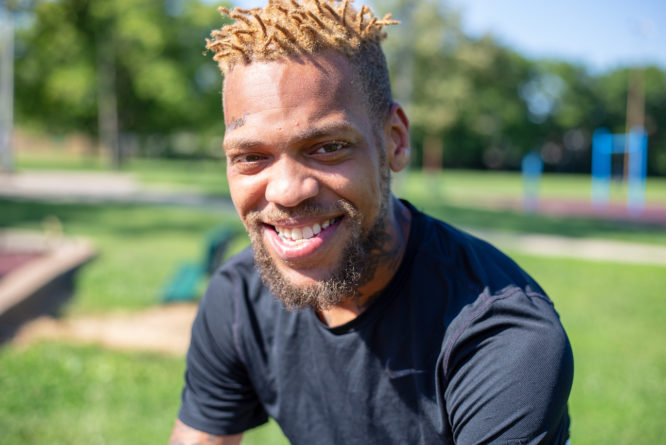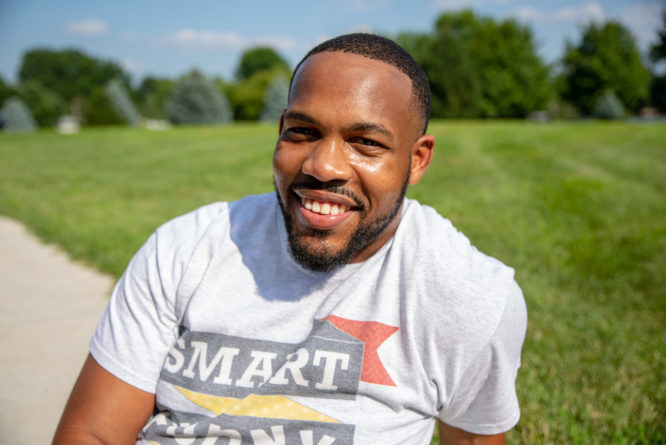Utilizing Community-Based Alternatives to Traditional Sentencing
The expert testimony, research, scholarship, and lived experience collected by the Commission revealed the following:
- Over the past few decades, there has been a rise in the number of “problem-solving” courts in the nation, which include community courts, drug courts, and domestic violence courts (Porter, 2010). One study defines “problem-solving courts” as courts that “seek to address a different set of problems, from systemic concerns such as exponential increases in criminal caseloads, growing jail and prison populations, and decreasing public confidence in justice, to individual-level problems like drug addiction, domestic violence and community disorganization” (Porter, 2010). Specifically, “community courts” focus on “improving public trust in justice, the importance of restorative justice, and involving the local community in identifying the major problems to be addressed” (Porter, 2010).
- Many communities around the country have developed successful community justice models. These models include:
- The Community Service Sentencing Project by the Vera Institute in New York, as described in the book “Sensible Justice: Alternatives to Prison” (Anderson, 1998)
- The Prisoners and Community Together program in Indiana (PACT)
- The Midtown Community Court, as described in “Dispensing Justice Locally: The Implementation and Effects of the Midtown Community Court” (Curtis, 2001)
- Bronx Community Solutions, created with the cooperation of the Center for Court Innovation, which actively utilizes alternative community service programming. In 2005, it was awarded a grant from the Bureau of Justice Assistance of the U.S. Department of Justice (Bronx Community Solutions)
- Red Hook Community Justice Center, as described in “A Community Court Grows in Brooklyn: A Comprehensive Evaluation of the Red Hook Community Justice Center” (Lee, 2013)
- In 2013, the Center for Court Innovation released a study of the effectiveness of the Red Hook Community Justice Center (Lee, 2013). According to the resulting report, the Red Hook Community Justice Center provided substantially different outcomes than its comparable downtown criminal court (Lee, 2013). “Compared to the downtown criminal court, the Justice Center increased the use of alternative community or social service sentences (78 percent at Red Hook versus 22 percent downtown); decreased the use of jail as a sentence (1 percent versus 15 percent), and decreased the proportion of misdemeanor defendants who “walk” (receive a sentence such as a fine or time served) without any ongoing obligation (20 percent versus 63 percent)” (Lee, 2013).
- The same report also described a substantial decrease in recidivism among adults. “Case processing at the Justice Center reduced the probability of re-arrest within a two-year period by 10 percent, or 4 percentage points (36% v. 40%). The 10 percent reduction in re-offending is comparable to other proven criminal justice interventions, many of which are of longer duration” (Lee, 2013).
- As written in Senate Bill 5, Missouri Statute § 479.360 now requires every municipality to file “its certification of its substantial compliance… with the municipal court procedures set forth in this subsection” (SB 5, 2015). The procedures to be adopted and certified include the requirement that “[t]he municipal court makes use of alternative payment plans and community service alternatives” (SB 5, 2015).
These findings prompted the Commission to draft several calls to action for alternative, community-based sentencing options and greater access to holistic social service provisions as a means of re-establishing community trust and input into the municipal court system.
To that end, the Commission issues the calls to action below.
Take Action
FTF Co-Chairs and Community Partners Call for Swift Policy Action
Residents Call for Policy Change, Regional Leaders Must Rise to the Challenge Forward Through Ferguson co-chairs, Rebeccah Bennett and Zachary Boyers, and 30 community partners call on policy and decision makers to deliver swift action on Ferguson Commission Calls to Action. Read the full statement on Medium, or download a pdf here. “Unfortunately, we’ve been…
Opportunity for a New Approach to Public Safety in St. Louis
An open letter to Mayor Lyda Krewson from Rebeccah Bennett and Zachary Boyers, Co-chairs of Forward Through Ferguson, on the public safety opportunity in front of our region. Click here to download a pdf of the open letter. Mayor Krewson, The retirement of Police Chief Sam Dotson represents a new day for public safety in St. Louis….
Suggested Reading List
Tokarz, K. & Stragand, S. (2015). Community justice courts can be an innovative reform. St. Louis Post-Dispatch. Retrieved from:https://www.stltoday.com/news/opinion/community-justice-courts-can-be-an-innovative-reform/article_96a59f74-f1cd-5aff-802e-014955831e69.html
Lee, C., Cheesman, F., Rottman, D., Swaner, R., Lambson, S., Rempel, M., Curtis, R. (2013). A community court grows in Brooklyn: A comprehensive evaluation of the Red Hook Community Justice Center. Center for Court Innovation: Community Court. Retrieved from:https://www.courtinnovation.org/research/community-court-grows-brooklyn-comprehensive-evaluation-red-hook-community-justice-center-f
Citations
- Anderson, D. (1998). Sensible justice: Alternatives to prison. New Press.
- Berman, G. and John Feinblatt, J. (2005). Good courts. New York: The New Press.
- Bronx Community Solutions. Center for Court Innovation. Retrieved from: https://www.courtinnovation.org/project/bronx-community-solutions
- Casey, P. & Rottman, D. (2005). Problem-solving courts: Models and trends. Justice System Journal. Retrieved from:https://www.jstor.org/stable/27977213?seq=1#page_scan_tab_contents
- Curtis, R., Sviridoff, M., Rottman, Ostrom, B. (2001). Dispensing justice locally: The implementation and effects of the midtown community court. National Institute of Justice. Retrieved from: https://www.courtinnovation.org/pdf/disp_just_loc.pdf
- Huddleston, W. & Marlowe, D. (2011). Painting the current picture: A national report on drug courts and other problem-solving court programs in the United States. Washington, DC: National Drug Court Institute. Retrieved from:https://www.ndci.org/sites/default/files/nadcp/PCP%20Report%20FINAL.PDF
- Lang, J. (2011). What is a community court?. New York: Center for Court Innovation. Retrieved from:https://www.courtinnovation.org/sites/default/files/documents/What%20is%20a%20Community%20Court.pdf
- Lee, C., Cheesman, F., Rottman, D., Swaner, R., Lambson, S., Rempel, M., Curtis, R. (2013). A community court grows in Brooklyn: A comprehensive evaluation of the Red Hook Community Justice Center, executive summary. Center for Court Innovation: Community Court. Retrieved from: https://www.courtinnovation.org/research/community-court-grows-brooklyn-comprehensive-evaluation-red-hook-community-justice-center-f
- PACT: The Prisoners and Community Together. Indiana. Retrieved from: https://www.pactchangeslives.com/
- Porter, R, Rempel, M., and Mansky, A. (2010). What makes a court problem solving? Universal performance indicators for problem-solving justice. Center for court innovation. Retrieved from: https://www.courtinnovation.org/sites/default/files/What_Makes_A_Court_P_S.pdf
- Rottman, D. & Casey, P. (1999). Therapeutic jurisprudence and the emergence of problem-solving courts. National Institute of Justice Journal. Retrieved from: https://www.ndcrc.org/sites/default/files/therapeutic_jurisprudence_and_the_emergence_of_problem-solving_courts.pdf
- SB 5, 98th General Assembly. (2015). Retrieved from: https://www.senate.mo.gov/15info/pdf-bill/tat/SB5.pdf
- Tokarz, K., Stragand, S., Blanton, J. & Terrell, J. Forthcoming 2015. Moving beyond Ferguson: The growing imperative to revamp our nation’s municipal courts and develop community justice centers to rebuild public trust, repair seriously fractured community relations, and advance restorative justice. Washington University Journal of Law & Policy.


